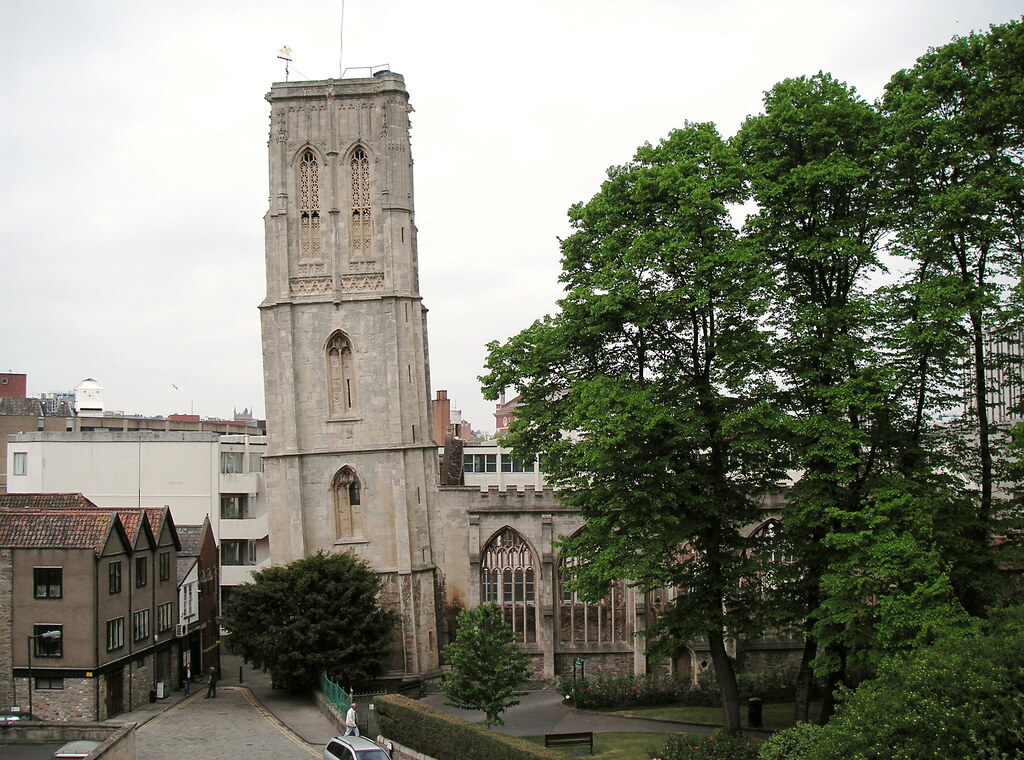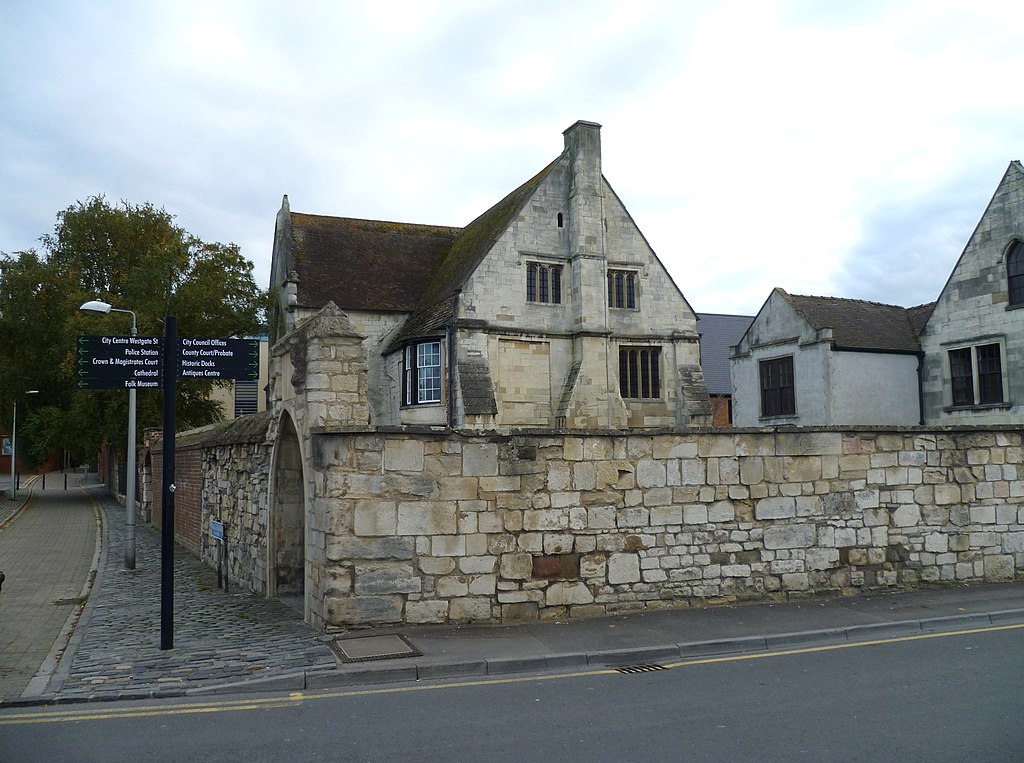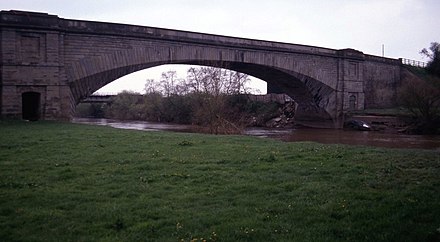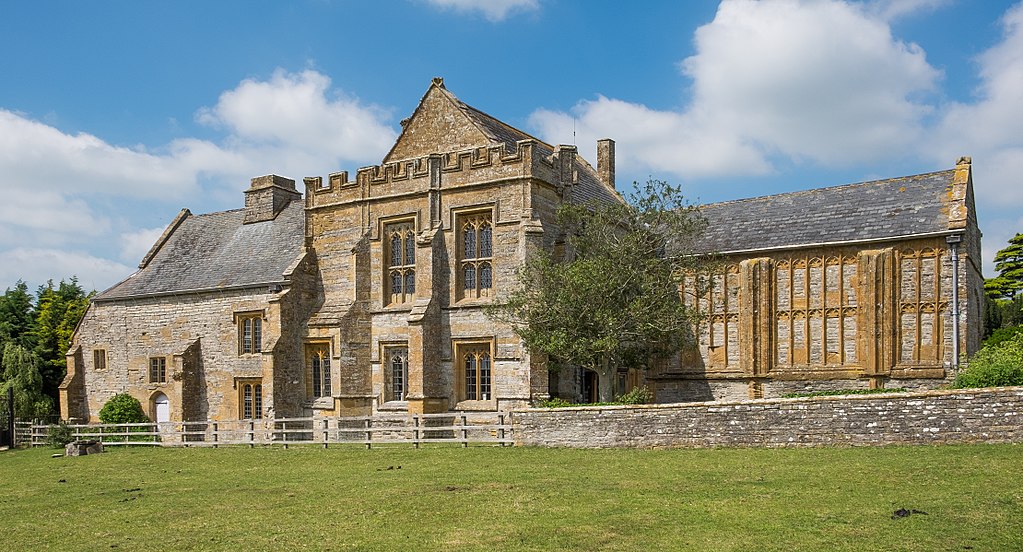Temple Church in Victoria Street, Bristol is sometimes known as the “leaning tower of Bristol”, because its tower leans 5 feet from the perpendicular. This is not as dramatic as its more famous equivalent in Pisa, whose lean is three times as much, but it certainly produces a striking effect, and has made the now-ruined church into a major Bristol landmark.
The church was built in the 12th century on a site donated by Robert, Earl of Gloucester to the Knights Templar, a powerful religious and military order that played a significant role in the Crusades. The church was dedicated to the Holy Cross, and like many Temple churches, it was built in the round, designed to evoke the Church of the Holy Sepulchre in Jerusalem.
However, the fortunes of the Knights Templar took a turn for the worse in the early 14th century. They fell out of favour with the pope and with King Philip IV of France, who accused them of idolatry and homosexuality. In 1312, Pope Clement V issued a papal bull disbanding the order, and many of its members were arrested and executed.
The Temple Church in Bristol was not spared the effects of the downfall of the Knights Templar. The church was taken over by the Knights Hospitaller, a religious order that was founded to care for the sick and injured. The Hospitallers later replaced the original round church with a rectangular one, built in the perpendicular style.
The Knights Hospitaller were in turn suppressed by Henry VIII during the dissolution of the monasteries, and the church became an ordinary parish church. Temple Fee parish (later absorbed into Redcliffe parish) was a centre for Bristol’s cloth trade, and the church contained a chapel dedicated to St Katherine, for the use of the Bristol Company of Weavers.
The church was bombed out during the Bristol Blitz of November 1940, but its shell was taken into public ownership, first by the Ministry of Works, and subsequently by English Heritage. It is a grade II listed building and a scheduled monument.
Today, the Temple Church is a popular destination for visitors to Bristol who are interested in history and architecture. The grounds are open to the public, though the interior of the church is not. The church also hosts occasional cultural events, such as concerts and exhibitions. The postcode is BS1 6HS, and the nearby Victoria Street bus stop is served by multiple bus routes.





